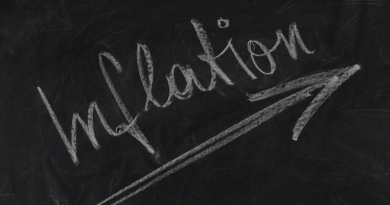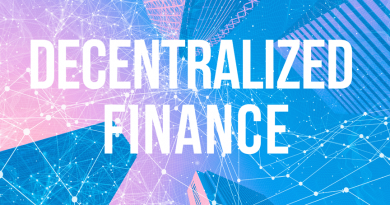Responsible innovation in money and payments
Michelle W Bowman is a Member of the Board of Governors of the Federal Reserve System
Innovations in money and payments continue to be of primary importance to the Federal Reserve. As part of its key functions, the Federal Reserve carries out a number of different responsibilities that include:
-fostering a safe and efficient payment system and providing services that support US financial markets and private-sector payment, clearing, and settlement arrangements;
-promoting the safety and soundness of individual financial institutions and monitoring their impact on the financial system as a whole;
-setting US monetary policy; and
-helping to maintain the overall stability of the US financial system and the economy.
As a policymaker, I view responsible innovation through the lens of accomplishing these policy goals.
Innovation in money and payments can take many forms. We have continued to see interest in digital assets, such as cryptoassets, stablecoins, central bank digital currency (CBDC), and programmable payment platforms, including those built on distributed ledger technology (DLT).
Alongside these innovations, we have embraced opportunities to improve the existing payment infrastructure by adopting and developing instant payments, planning for future technology upgrades and improvements, and considering other more straightforward changes like expanding operating hours for the wholesale payment infrastructure.
I will share my views on several of these potential improvements, including CBDC, other digital assets, and wholesale payments innovations. I will also discuss the importance of determining whether the benefits of innovation flow from the new technology itself or, rather, result from policy choices that require new technology adoption.
Throughout, I will lay out a vision for responsible innovation, which recognizes the important role of private-sector innovation and leverages the strengths of the US banking system supported by clear prudential supervision and regulation, and I will discuss how policy can support the continued development of the payment system and broader financial system.
Digital assets
Often, discussions about the evolution of the payments landscape focus on novel forms of payment, including CBDC, stablecoins, and other forms of digital assets.
Central Bank Digital Currency
First, I will touch on CBDC. For the purposes of this discussion, I will define CBDC as a new, digital form of central bank money widely available to the general public. Some refer to this as a ‘general purpose’ or ‘retail’ CBDC.
There are meaningful differences between this type of retail CBDC and what is commonly referred to as a wholesale CBDC, which is a term some use to refer to digital central bank money used to settle large-value transactions among banks. While I will return to the concept of a wholesale CBDC in a moment, I would like to share my thoughts on the debate about the introduction of a retail CBDC in the United States.
As I have noted before in other venues, there are two threshold questions that a policymaker should ask when contemplating a CBDC. First: what problem is the policymaker trying to solve, and is there a more efficient way to solve it?
Second: what features and considerations, including unintended consequences, should a policymaker think about before deciding to adopt a CBDC and in designing the operation of a CBDC?1
On the first question, we have seen a range of arguments in the public debate about issuing a CBDC, including addressing frictions within the payment system, promoting financial inclusion, and providing the public with access to safe central bank money. These are all important issues.
I have yet to see a compelling argument that a US CBDC could solve any of these problems more effectively or efficiently than alternatives, or with fewer downside risks for consumers and for the economy.
Yet in the United States, we have a safe and efficient payment system that continues to evolve with responsible innovations, like the FedNow Service, which is the Federal Reserve’s new interbank system for instant payments that launched in July of this year.
Through FedNow, participating banks, businesses, and consumers can send and receive instant payments in real time, around the clock, every day of the year, with immediately available funds.
FedNow, and a similar private sector service, is designed to help make everyday payments faster and more convenient, allowing consumers to instantly receive funds with same-day access, and enabling small businesses to more efficiently manage cash flows without processing delays.
Future innovations may further build upon these services to more effectively address payment systems frictions and financial inclusion. It is quite possible that other proposed solutions may address many or all of the problems that a CBDC would address, but in a more effective and efficient way.
Further, the potential benefits of a US CBDC remain unclear, and the introduction of a US CBDC could pose significant risks and tradeoffs for the financial system. These risks and tradeoffs include potential unintended consequences for the US banking system and considerable consumer privacy concerns.
The US banking system is a mature, well-functioning, and effective system that delivers important benefits to our economy. Within this system, banks play a number of important roles, including providing consumers with access to credit and other banking and payments services, all within an established regulatory perimeter.
In addition, bank compliance and reporting programs support important public policies, like deterring criminal activity and protecting consumer financial data. Banks also play an essential role in the transmission of monetary policy, and they provide the foundation for a well-functioning economy and financial system.
While I support responsible innovation that benefits consumers, I caution against solutions that could disrupt and disintermediate the banking system, potentially harming consumers and contributing to broader financial stability risks
The US intermediated banking model helps to insulate consumer financial activities from unnecessary government overreach, and I believe this is an appropriate model for future financial innovation. If not properly designed, a CBDC could disrupt the banking system and lead to disintermediation, potentially harming consumers and businesses and presenting broader financial stability risks2.
As policymakers, we would need to carefully consider how an intermediated CBDC, with private-sector service providers, could be designed in a way that maintains financial institution involvement and minimizes, or ideally, eliminates related disruptions to the broader US financial system.
I believe it is important to continue to research the possible benefits, risks, and tradeoffs of a potential US CBDC, and to follow international CBDC developments that could have implications for the United States.
However, given that we have a safe and efficient payment system and a well-functioning banking system, the potential uses of a US CBDC remain unclear and, at the same time, could introduce significant risks and tradeoffs.
That said, recognizing the interconnected and global nature of the financial system, I see value in continuing to research and understand the underlying technology and associated policy implications as other jurisdictions continue to actively pursue CBDCs.
Doing so ensures we are aware of and can be responsive to any developments and can continue to support a safe and efficient financial system into the future.
Stablecoins
But a CBDC is just one potential piece of the evolving payments landscape. Another alternative to traditional forms of money and payment, or to a CBDC, is stablecoins. This form of payment emerged primarily to support the trading of cryptoassets but increasingly has been proposed as an alternative to traditional payments and as a store of value.
Stablecoins purport to have convertibility one-for-one with the dollar, but in practice have been less secure, less stable, and less regulated than traditional forms of money.
Digital assets used as an alternative form of money and payment, including stablecoins, could pose risks to consumers and the US banking system. Therefore, it is important to understand risks and tradeoffs associated with digital assets and new arrangements used for banking and payments.
While I support responsible innovation that benefits consumers, I caution against solutions that could disrupt and disintermediate the banking system, potentially harming consumers and contributing to broader financial stability risks.
And, where the activity happens outside the regulatory perimeter, consumers would be left without the adequate protections that our regulated and supervised banks provide today in the United States.
A comprehensive regulatory framework
For these reasons, my vision for responsible innovation includes a clear and sensible regulatory framework, where we incorporate what works well today in the US banking system, allowing for private sector innovations within established guardrails.
Within this framework, it is imperative that the same activities that present the same risks are subject to the same regulations—regardless of what a product is called and by whom it is offered. I think the desire for ‘new’ often leads us to overlook existing success, both in terms of regulatory approach and financial services.
Rather than speculate about the composition of alternative regimes, we should ask how these new products and providers can be held to the same standards as banks, especially with respect to consumer protection.
As an example, stablecoin issuers today typically are licensed or chartered at the state level as money service businesses or trust companies, and, in some cases, offer bank-like services, including the ability to store funds.
However, while many of these issuers are subject to state supervision, they are not subject to the full complement of prudential regulation applicable to banks like capital requirements and prudential supervision. They also do not benefit from the backstops and protections available to banks like deposit insurance coverage and access to central bank liquidity in times of stress.
In order to protect consumers, it is imperative that activities that present the same risks are subject to the same regulations and offer the same protections. This approach would also allow banks to compete on a level playing field in introducing products and services to benefit consumers. This type of regulatory clarity can provide support for responsible innovation.
Wholesale payments innovation
Next, I will speak to potential improvements, including technological innovations, in wholesale payments. Wholesale payments generally refer to large-value, interbank transactions, and not consumers sending money to other consumers. This refers to the financial plumbing that banks use behind the scenes to settle payments.
The Federal Reserve continues to speak to a broad range of stakeholders and conduct research regarding emerging technologies, including those that could enable or be supported by future Federal Reserve-operated payment infrastructures.
The goal is to better understand potential opportunities and risks of new wholesale payment platforms, including those built on DLT, as well as the associated risks and benefits of depository institutions transacting on these platforms with ‘tokenized’ forms of digital central bank money, sometimes called wholesale CBDC.
In my view, the term ‘wholesale CBDC’, despite its wide use, is generally a misnomer that leads to confusion since we already have central bank money in digital form that is available to banks for wholesale transactions3.
Today, banks and other eligible entities hold central bank money as digital balances at the Federal Reserve—frequently referred to as reserves. These reserves are held for a number of purposes, including settling large-value interbank payments.
Interbank payment services, like the Fedwire Funds Service and other private sector services, are critical to the functioning and stability of the financial system, and the economy more broadly, as they enable important financial market functions4.
Wholesale payment infrastructures operated by the central bank tend to underpin domestic and international financial activities by serving as a foundation for payments and the broader financial system. This infrastructure allows payments to flow safely between consumers and businesses within the United States and internationally.
Since this infrastructure is so critical to the payments system, it is necessary that we investigate and understand the potential opportunities, risks, and tradeoffs for wholesale payments innovation to support a safe and efficient US payment system.
These wholesale systems function safely and efficiently today, but we have seen new payment platforms built on innovative technologies that have generated interest in new capabilities. This includes transacting ‘tokenized’ forms of money and assets and enhancing the programmability of payments through the transfer of money using so-called smart contracts.
These platforms are also being explored as a way to improve the efficiency of payment, clearing, and settlement of certain financial transactions, including for crossborder purposes.
Policymakers should be mindful of the specific features innovative wholesale platforms could include, and the risks, tradeoffs, and other considerations they could entail. For example, one potential model under consideration is the concept of a common platform or shared ledger that could facilitate digital asset transactions, including commercial bank and central bank liabilities5.
This type of ledger could be specific to one jurisdiction (such as US dollar transactions only among regulated financial institutions) or across jurisdictions and containing multiple currencies.
While there is interest in new capabilities and efficiencies that a shared ledger could offer, transacting central bank money on a shared ledger may introduce additional risks and operational complexities. This would depend on how a platform would be governed, and which entities would be allowed to participate.
In the United States for example, this technology would introduce risks and complexities that do not exist today because a shared ledger might allow central bank money to circulate on a platform that is not owned and operated by the central bank. Important legal, policy, and operational questions would need to be thoroughly considered alongside an assessment of potential benefits.
Another potential model is one where central banks maintain their own ledgers—just as they do today—and use DLT as a bridge between distinct ledgers to achieve interoperability and facilitate crossborder, cross-currency payments6.
Still other models exist across both wholesale and retail payments that would leverage existing infrastructure. Examples include experiments that look at interlinking faster domestic payment systems to facilitate crossborder payments, or even exploring how existing domestic payment infrastructures could be incrementally improved7.
Each model contains its own set of potential features and tradeoffs. While my vision for responsible innovation includes a broad understanding of different options, I continue to emphasize that to help focus efforts, we must begin by asking ‘What specific problem are we trying to solve?’
The importance of policy choices
This brings me to the question of whether the potential benefits from innovation come from new technology or from changes to existing policy. While conversations on payments innovation often focus on the technological capabilities, policymakers must apply a critical lens to understand whether changes to regulations or policies would be necessary to address specific concerns.
Some potential technology solutions assume—or even require—policy change, such as issues related to operating hours and account access. In these cases, a new technology alone cannot solve the issue. Some point to a decentralized infrastructure to support digital assets as a solution to address current frictions in crossborder payments, like speed and cost of payments.
However, these perceived payment limitations do not always stem from problems with existing technology, but rather from existing policies, laws, and even consumer and business preferences. And within the international context, some changes may require greater alignment across jurisdictions.
Some purported payment limitations or frictions exist for specific reasons related to managing key risks that policymakers may not want to change, and it is important to understand the tradeoffs of these policy decisions.
Let’s use the example of compliance requirements that deter financial crimes and counter the financing of terrorism. These policies exist to accomplish specific policy goals and are implemented by banks that balance the need for transparency to deter crime and the protection of consumer financial information from government overreach.
In these cases, the perceived barriers in existing payment systems are established for important public policy reasons and are not limitations resulting from the existing technology itself. It is important to not only thoroughly understand what technological innovations can do, but also what these innovations should be able to do within the broader context of a robust, well-functioning banking and payments system.
My vision for responsible innovation requires that we continue to distinguish which specific payment frictions can benefit from technological innovation itself and which are questions of policy and exist for good reasons, as well as the recognition that we should not compromise vital public policies in the name of innovation.
The importance of continued research
The Federal Reserve remains open to multiple options to improve the payments landscape. We continue to conduct research to fully understand technological innovations and their associated benefits, risks, and tradeoffs. We must also fully understand any related implications for Federal Reserve payment infrastructure and policy outcomes.
Researchers cover a wide range of policy areas, including payments policy, privacy considerations, financial inclusion, financial stability, and monetary policy implications. Because new digital assets are currently focused on tokenization of certain traditional or even new types of money, tokenization is a research theme for the Federal Reserve and for central banks globally.
While this topic is relevant to CBDC research work, it will also inform other issue areas—including discussions about stablecoin regulation, novel banking activities supervision, and efforts to improve the current payment system.
Technologists at the Board and the Reserve Banks have been conducting focused research and experimentation to provide insight into technical capabilities and risks associated with digital assets, including CBDC, and the programmable platforms that could support payment infrastructure improvements.
These experiments give the researchers hands-on experience with new technologies and allow the Federal Reserve to examine the application of emerging technologies in retail, wholesale, and crossborder use cases.
The Federal Reserve Board continues to collaborate closely with international counterparts on issues related to digital payments. This includes engagement with multilateral institutions, such as the Bank for International Settlements, G7, Financial Stability Board, and bilateral engagements with other central banks.
This work reflects the interconnectedness of the global financial system and allows us to follow actions taken by other jurisdictions and understand any related implications for the United States.
Conclusion
As the money and payments landscape evolves, I continue to stress the importance of looking ahead and analysing potential changes that may emerge well into the future. This can be done most effectively by understanding the broad range of options that could be leveraged to improve payments, including technology, improvements to existing payment infrastructure, and policy options and their implications.
Given the breadth of activity in this space, I believe that policymakers must specify the problems they are trying to solve, understand the range of alternatives that could address any problems, including policy and technology options, and thoroughly analyse the associated risks and tradeoffs.
For all of the Federal Reserve’s involvement in this work, I support a responsible approach to innovation that recognizes the role of private sector innovations, benefits from the strengths of the US banking system, and focuses policymakers on thinking about payment and financial system infrastructure and effective policy.
To achieve this, I support a clear regulatory framework that provides for responsible innovation while building upon what works well today and preventing disruption of the US banking and payment system.
Endnotes
1. For additional discussion on CBDC, see Michelle Bowman, “Considerations for a Central Bank Digital Currency” (speech at Georgetown University, Washington, D.C., April 18, 2023).
2. The Federal Reserve’s initial analysis suggests that a potential U.S. CBDC, if one were created, would best serve the needs of the United States by being privacy-protected, intermediated, widely transferable, and identity-verified. See Board of Governors of the Federal Reserve System, “Money and Payments: The U.S. Dollar in the Age of Digital Transformation (PDF)” (Washington: Board of Governors of the Federal Reserve System, January 2022).
3. Fabio Panetta, member of the Executive Board of the European Central Bank, has argued that wholesale CBDC has existed for decades. See Fabio Panetta, “Demystifying wholesale central bank digital currency” (speech at the Deutsche Bundesbank Symposium on Payments and Securities Settlement in Europe, Frankfurt, Germany, September 26, 2022).
4. For additional discussion on wholesale CBDC versus reserves on a wholesale payment platform, see Jon Durfee, Jesse Leigh Maniff, and Priyanka Slattery, “Examining CBDC and Wholesale Payments” (Washington: Board of Governors of the Federal Reserve System, September 8, 2023).
5. Agustín Carstens, general manager of the Bank for International Settlements, has discussed the idea of a ‘unified ledger’ run by the central bank to fully realize the potential of new technologies developed by the private sector. See Agustín Carstens, “Innovation and the Future of the Monetary System” (speech at the Monetary Authority of Singapore, February 22, 2023).
6. For example, see Project Cedar, a technical experiment by the Federal Reserve Bank of New York’s Innovation Center, which examined whether distributed ledger technology could be used to improve the efficiency of crossborder payments and settlements involving multiple currencies, at https://www.newyorkfed.org/aboutthefed/nyic/project-cedar.
7. For example, see the Bank for International Settlements Innovation Hub Project Nexus proof-of-concept, which explores the interlinking of domestic faster payment systems.
Thank you to Alex Sproveri and Priyanka Slattery of the Federal Reserve Board for their assistance in preparing this text. These views are my own and do not necessarily reflect those of the Federal Reserve Board. This article is based on a speech delivered at Roundtable on Central Bank Digital Currency, Harvard Law School Program on International Financial Systems, Washington, DC, October 17, 2023.




